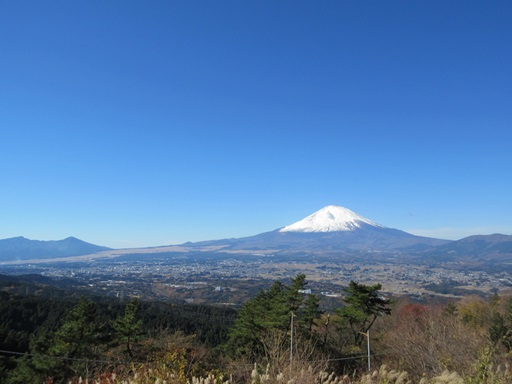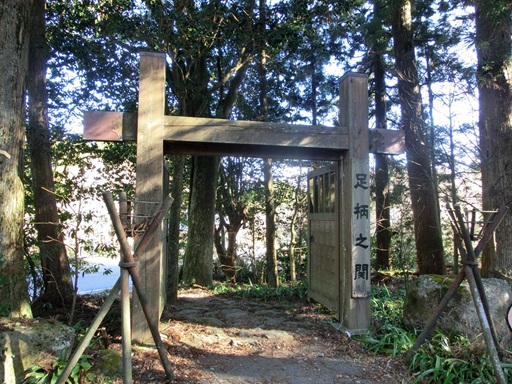|
"Ashigara Pass" in Shizuoka and Kanagawa

"Ashigara Pass" is located at the border of Sagami Province (present-day, Kanagawa Prefecture) and Suruga Province (present-day Shizuoka Prefecture) on "Ashigara-Kodo", to the north of Hakone Mountains. "Ashigara-Kodo" was the main road to cross the Hakone Mountains. The altitude of Ashigara Pass is 759 meters. Since ancient ages, the mountains of Hakone have been a difficult place for people traveling between the eastern and the western regions. Please refer the page of "Ashigara-Kodo for more detailed description: http://handejapan19.html.xdomain.jp/TravelDestinations/Chubu/Ashigara_Kodo_E.html Many people traveled on the "Ashigara-Kodo" through Ashigara Pass, since ancient times. Ashigara Pass was an important military location, with Ashigara Fort built on the pass. In December 2011, I walked along the Ashigara Old Trail towards Ashigara Pass. It was one hour and forty minute walk from Ashigara Station at the foot of the mountain to Ashigara Pass. 
As you approach Ashigara Pass, you can see a retaining wall on the north side of the paved road. This is Ashigara Pass. A bridge has been built over the pass. Ashigara Pass is located at the border between Shizuoka Prefecture and Kanagawa Prefecture. 
At the pass, there was a stone monument of SHINRA SABURO Yoshimitsu (1045 - 1127) .
SHINRA SABURO Yoshimitsu was a younger brother of MINAMOTO-NO Yoshiie (1039 - 1106) , who was a military commander appointed by Emperor SHIRAKAWA to conquer the Tohoku Area in 1083. SHINRA SABURO Yoshimitsu crossed Ashigara Pass when he went to Tohoku to reinforce his brother, MINAMOTO-NO Yoshiie. It is said that SHINRA SABURO Yoshimitsu taught TOYOHARA Tokiaki a secret tune of "Sho", a Japanese instrument at Ashigara Pass, in case he was killed in battle in Tohoku.It is said that the stone besides the monument was the place where SHINRA SABURO Yoshimitsu TOYOHARA Tokiaki "Sho". After walking up the stairs of the retaining wall at Ashigara Pass, you will arrive at the main bailey of the ruins of Ashigara Fort. The area is well-maintained and has a large lawn. |










